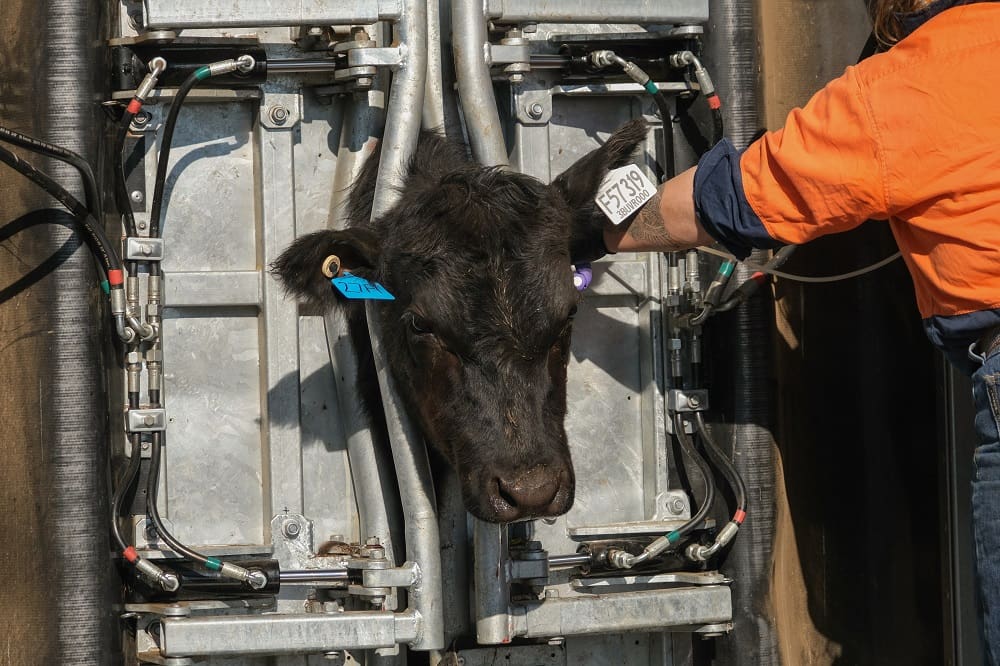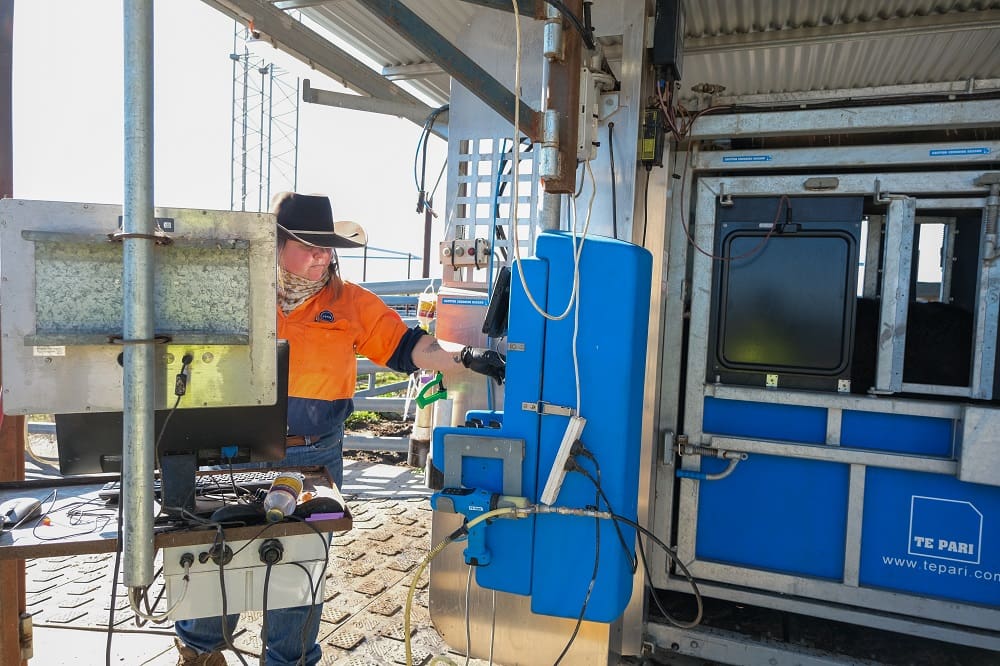AN automatic cattle crush tailored to inducting cattle into feedlots has demonstrated the potential to reduce labour requirements and bring down cost, a BeefEx conference audience heard last week.
With funding from Meat & Livestock Australia, New Zealand-based livestock yard and handling equipment manufacturer Te Pari combined existing and new technologies to develop a fully automated system bring to bring the animal into a crush with gates shutting behind it and head bale closing.
The side squeeze is then activated and a bar comes in behind the animal to stop it backing up. Weights are automatically taken and EID tags are automatically scanned. A push of the button releases the animal and brings the next through.
Cattle handling technologies have advanced considerably in recent decades and as Beef Central found at Farm Fest earlier this year, where many of the big brands offering were offering products with a significant degree of automation.
The automated set ups had seen considerable uptake from backgrounders and lotfeeders, who were handling a lot of cattle, and corporates trying to mitigate safety issues.
Te Pari’s prototype was trialled at Teys Charlton feedlot, with the results being discussed during a session at last week’s Beef Ex conference in Brisbane.
Potential to reduce labour
Teys Charlton livestock supervisor Samantha Gladman said the crush definitely had the potential to reduce labour requirements and allow less-skilled workers handle the induction process.
“Because the skill of catching the animal isn’t required, it is opens up the potential of less skilled labour – because I think catching the animal in the crush is a skill,” Ms Gladman said.
“A supervisor or skilled person could set everything up and less skilled people could do the rest.
“Even with a less experienced team, I think it could remove at least one labour unit going off our induction process which generally has four people.”
Ms Gladman said there were other benefits of not having to physically handle the equipment, with less stress on people and animals.
“With less human interaction the cattle were a lot calmer – there are always exceptions to that,” she said.
“The data entry side of induction was better as well, because you can turn your attention to the computer while the machine catches the next animals. You would usually have to stop while you are bringing the next animal through.”
Bringing it to the next level
Ms Gladman said most of the trial was done with straight lines of cattle with little variation in weight and size, which meant the crush rarely needed to be adjusted.
She said a crush that could detect the size and speed of the animal and adjust itself accordingly would take it to the next level.
“It would be good to see the crush adjusting itself in real time like a human would, that would especially help for mixed mobs,” she said.


